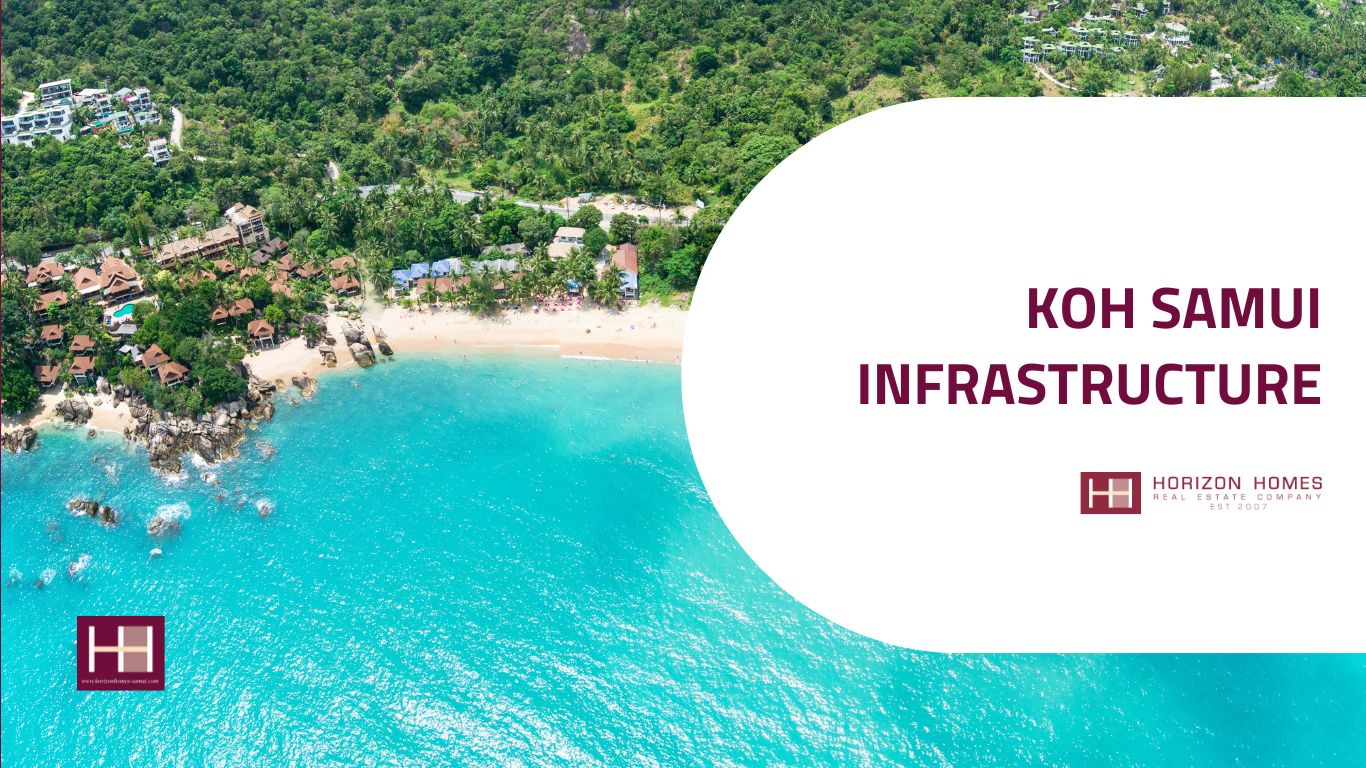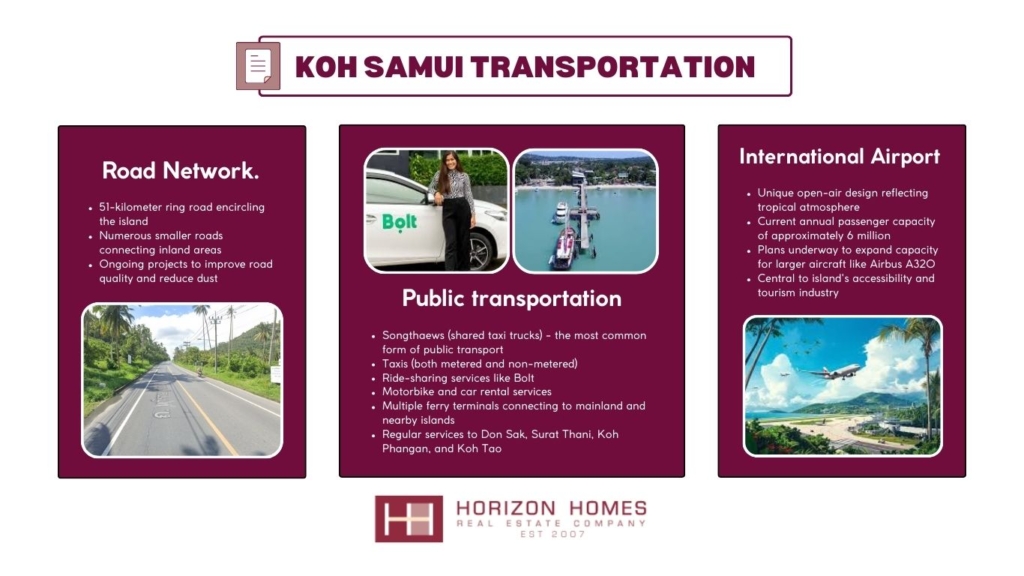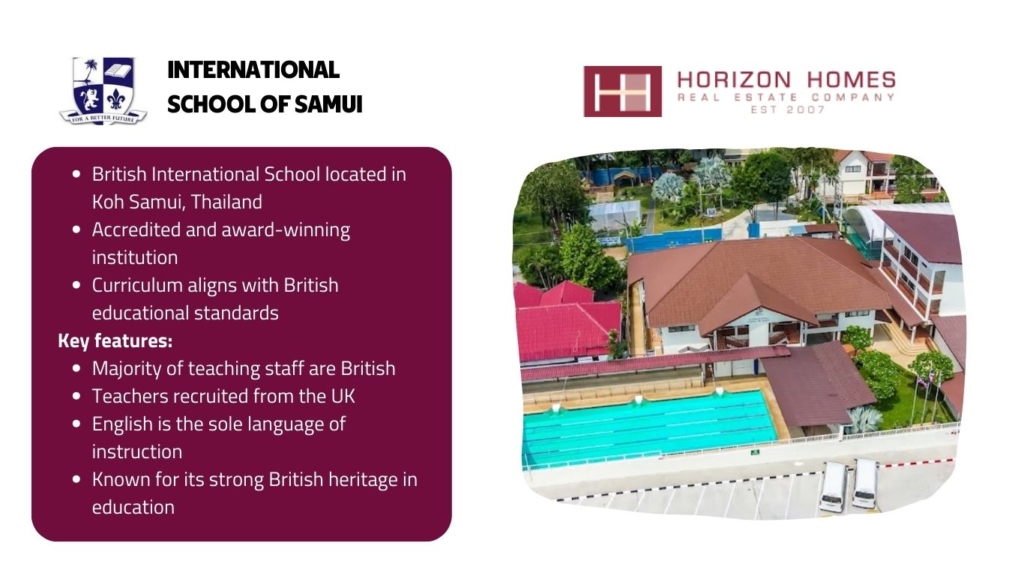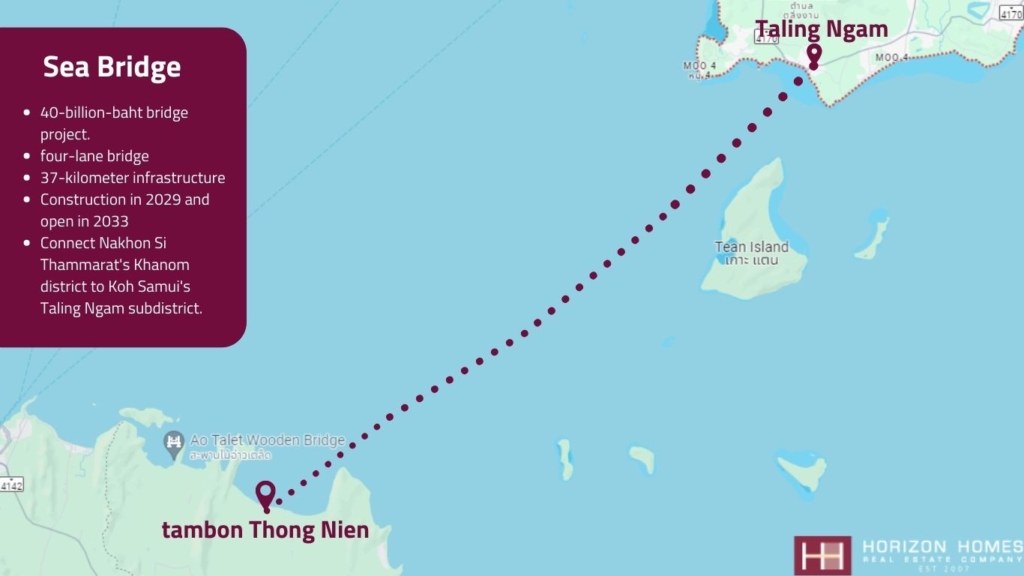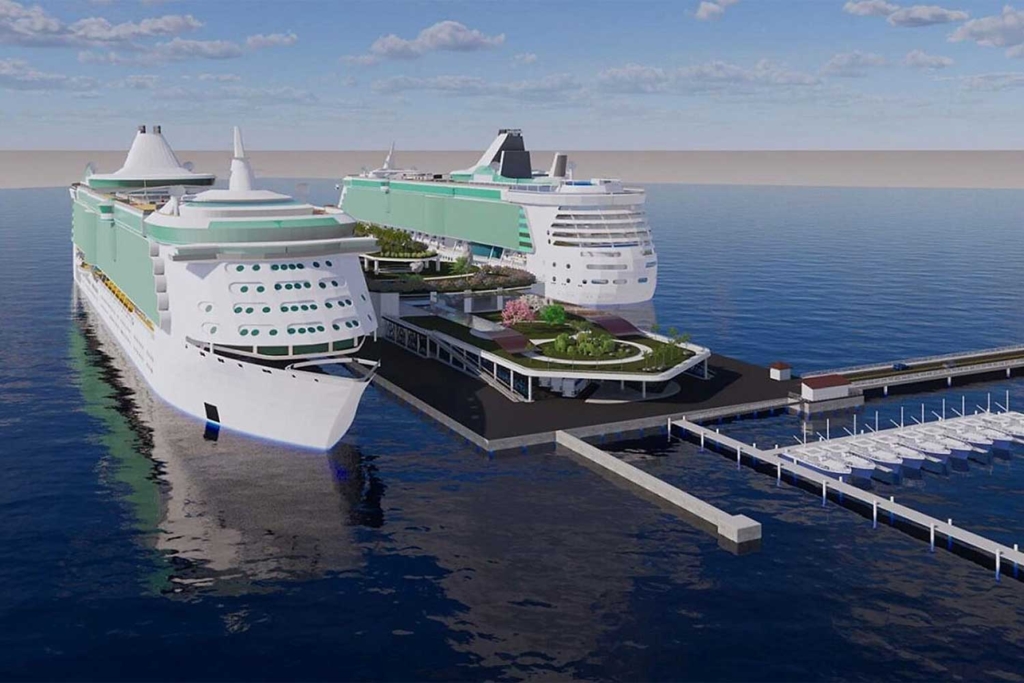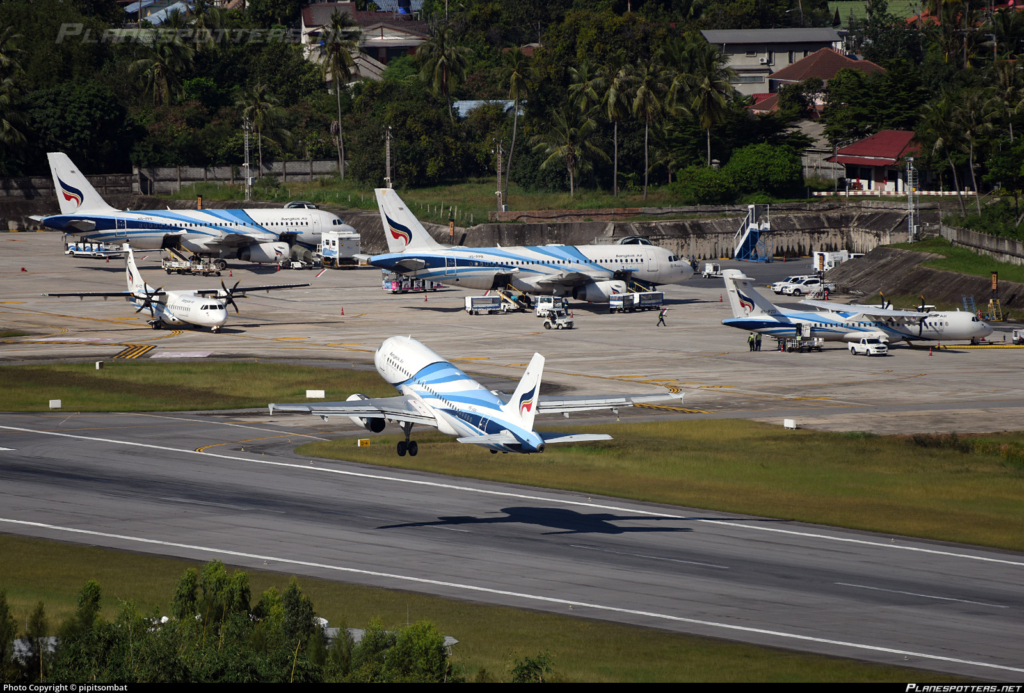Koh Samui, a popular island destination in Thailand, is renowned for its stunning beaches, nightlife, and rich cultural heritage. However, the island’s infrastructure, encompassing transportation, utilities, health services, and urban development, plays a critical role in supporting its burgeoning tourism and local communities.
Koh Samui’s infrastructure initiatives reflect a broader struggle to balance economic growth with environmental stewardship, requiring coordinated efforts among local authorities, community members, and stakeholders. As the island continues to develop, addressing these infrastructure challenges will be vital to ensure a sustainable future for both its residents and the millions of visitors who flock to its shores each year.
Transportation
Koh Samui offers a variety of transportation options that cater to both locals and tourists, enhancing the accessibility and enjoyment of the island’s attractions.
At the heart of Koh Samui’s accessibility is its unique International Airport. Known for its charming open-air design, the airport currently handles around 6 million passengers annually. Plans are underway to expand its capacity to accommodate larger aircraft like the Airbus A320.
- Koh Samui’s road network is anchored by a 51-kilometer ring road that encircles the entire island, providing a primary route for transportation. Complementing this main artery are numerous smaller roads that connect inland areas, ensuring accessibility across the island. The local government is actively engaged in ongoing projects to improve road quality and reduce dust, enhancing the overall driving experience for residents and tourists alike.
- Public transportation on Koh Samui is diverse and accommodating. Songthaews, which are shared taxi trucks, serve as the most common and economical form of public transport, playing regular routes around the island. For those seeking more direct transportation, both metered and non-metered taxis are readily available. The island has also embraced modern ride-sharing services, with companies like Bolt offering convenient alternatives. Additionally, for visitors and residents preferring more independence, motorbike and car rental services are widely accessible, allowing for personal exploration of the island at one’s own pace.
Maritime connections play a crucial role in Koh Samui’s transportation infrastructure. The island boasts multiple ferry terminals that provide vital links to the mainland and nearby islands. Regular ferry services operate routes to key destinations such as Don Sak and Surat Thani on the mainland, as well as to neighboring islands like Koh Phangan and Koh Tao. These maritime links not only facilitate tourism but also serve as essential conduits for goods and services, supporting the island’s economy and daily life.
Future Transportation Projects:
Samui Sea Bridge: A 40-billion-baht project connecting Koh Samui to the mainland, spanning 25 kilometers across the Gulf of Thailand
Cruise ship terminal: Planned to accommodate up to 118 cruise ships annually
Seaplane base: Proposed to enhance connectivity for high-end tourists
These developments seek to reduce reliance on existing aerial and maritime routes, promising improved accessibility for both residents and visitors. Collaborative traffic management strategies are also being implemented to address increasing vehicle numbers and traffic congestion, ensuring a smoother travel experience across the island.
Health Services
Koh Samui boasts a diverse healthcare infrastructure that accommodates both residents and tourists, with a variety of public and private medical facilities available on the island. Expats and visitors often opt for private hospitals due to the generally higher quality of service and the ability to access English-speaking medical professionals. Some of the notable private healthcare facilities includes:
Additionally, numerous clinics and well-stocked pharmacies are prevalent across the island, stocking a variety of medications and healthcare products. Many pharmacies employ English-speaking staff, facilitating easier access to over-the-counter and prescription medications. The healthcare system has adapted to recent global challenges by enhancing health and hygiene protocols in response to the COVID-19 pandemic, ensuring the safety of both locals and tourists.
Education
Koh Samui has developed a range of educational institutions to meet the needs of its diverse population, particularly catering to expatriate families. Several international schools offer high-quality education, with curricula that include the British system. International schools offer quality learning options, while environmental programs in local schools aim to foster sustainability awareness among younger generations. Some of the best schools are:
Additionally, numerous clinics and well-stocked pharmacies are prevalent across the island, stocking a variety of medications and healthcare products. Many pharmacies employ English-speaking staff, facilitating easier access to over-the-counter and prescription medications. The healthcare system has adapted to recent global challenges by enhancing health and hygiene protocols in response to the COVID-19 pandemic, ensuring the safety of both locals and tourists.
Utilities
Water Management
Koh Samui faces significant challenges in water supply. The island is grappling with water shortages due to increased demand and declining rainfall. Authorities report that the available freshwater can only meet the needs of residents for approximately 30 days. Efforts to address the crisis include the construction of an underwater pipeline to supply an additional 24,000 cubic meters of water daily from Surat Thani on the mainland. Despite these measures, many residents have resorted to paying between 250 to 300 baht for around 2,000 liters of water due to irregular tap water supply.
Waste Management
Koh Samui faces significant challenges regarding waste management, primarily due to its growing population and tourist influx. To address these issues, the municipality has implemented various initiatives aimed at enhancing awareness and participation among residents.
- The municipality has initiated educational programs in schools to instill environmental responsibility in future generations.
- Additionally, organic waste collection for composting represents a significant step towards a circular waste management system, reducing landfill burden and providing valuable resources for local agriculture.
- Moreover, Koh Samui signed the DOI under the Plastic Smart Cities initiative on March 13, 2023, indicating a commitment to more sustainable waste management practices and a collaborative approach to tackling plastic pollution.
The ongoing efforts aim to build a cleaner and more sustainable environment, both for residents and visitors alike.
Future development of koh Samui infrastructure
Sea Bridge
Koh Samui’s infrastructure is set for a revolutionary transformation with the ambitious 40-billion-baht bridge project connecting the island to the mainland. The Expressway Authority of Thailand (EXAT) has unveiled plans for a four-lane bridge spanning 25 kilometers across the Gulf of Thailand, part of a larger 37-kilometer infrastructure project. This monumental undertaking, scheduled to begin construction in 2029 and open in 2033, will connect Nakhon Si Thammarat’s Khanom district to Koh Samui’s Taling Ngam subdistrict.
The bridge’s design, a combination of cable-stayed and beam structures, prioritizes maritime traffic accommodation and environmental considerations. Standing 50 meters above the channel at its highest point, it will allow passage for large vessels while maintaining a 15-meter clearance for fishing boats. EXAT Governor Surachet Laophulsuk emphasizes the project’s benefits for tourism and its cost-effectiveness compared to a tunnel alternative.
Cruise Ship Terminal
Koh Samui is poised for a significant transformation in its tourism infrastructure, with plans for both air and sea travel expansions. Prime Minister Srettha Thavisin has announced strong government support for a cruise ship terminal on the island, aiming to elevate Koh Samui’s status as a premier tourist destination. The Marine Department’s ambitious project, targeted for completion by 2032, envisions a 47-rai facility capable of accommodating 180,000 tourists and 118 cruise ships annually, with projected revenues of 8.5 billion baht over 30 years.
This terminal would be strategically positioned along the popular Singapore-Hong Kong sailing route, potentially making Koh Samui a key stop for international cruise lines. The plan includes a three-story passenger building, a yacht marina, and supporting onshore infrastructure. Complementing this maritime development, the government is also exploring the feasibility of expanding Koh Samui’s airport to handle larger aircraft like the Airbus A320, potentially doubling its current capacity of 6 million passengers per year.
Expanding the island’s airport.
Koh Samui’s airport is on the cusp of a major transformation. Prime Minister Srettha Thavisin recently announced that a feasibility study for a significant expansion is currently underway, with results expected in early 2024. The ambitious project aims to dramatically increase the airport’s capacity and capabilities. Currently, the airport boasts a single 2.1-kilometer runway that can handle smaller aircraft like the Airbus A319, with an annual capacity of 6 million passengers. The proposed expansion plans to accommodate larger aircraft such as the Airbus A320, potentially doubling the airport’s passenger handling capacity.
Conclusion
Koh Samui’s infrastructure represents a delicate balance between modern convenience and tropical allure. As the island continues to grow and evolve, the challenge lies in maintaining this equilibrium, ensuring that development enhances rather than detracts from the island’s unique charm. With thoughtful planning and community engagement, Koh Samui is well-positioned to remain a jewel in Thailand’s tourism crown for years to come.

